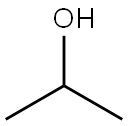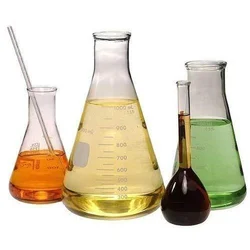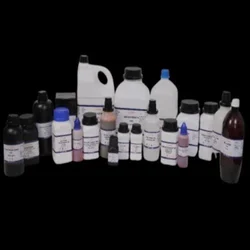Allyl alcohol
Synonym(s):2-Propen-1-ol
- CAS NO.:107-18-6
- Empirical Formula: C3H6O
- Molecular Weight: 58.08
- MDL number: MFCD00002920
- EINECS: 203-470-7
- SAFETY DATA SHEET (SDS)
- Update Date: 2025-01-27 09:38:02

What is Allyl alcohol?
Chemical properties
Allyl alcohol is a flammable, colorless liquid. It has a pungent, mustard-like odor. It is used in making drugs, organic chemicals, pesticides, in the manufacture of allyl esters, and as monomers and prepolymers for the manufacture of resins and plastics. It has a large use in the preparation of pharmaceutical products, in organic synthesis, and as a fungicide and herbicide. Occupational workers engaged in industries such as the manufacture of drugs, pesticides, allyl esters, organic chemicals, resins, war gas, and plasticizers, are often exposed to this alcohol.
Physical properties
Colorless, mobile liquid with a pungent, mustard-like odor at high concentrations. At low concentrations, odor resembles that of ethyl alcohol. Katz and Talbert (1930) and Dravnieks (1974) reported experimental detection odor threshold concentrations of 3.3 mg/m3 (1.4 ppmv) and 5 mg/m3 (2.1 ppmv), respectively.
The Uses of Allyl alcohol
Allyl alcohol is used as an intermediate compound for synthesizing raw materials such as epichlorohydrin C3H5ClO and 1,4- butanediol C4H10O2, and this development is bringing about expansion of the range of uses of allyl alcohol. The term allyl of allyl compounds is derived from allium, the Latin word for garlic. It is also used to induce a mouse model of liver damage that has been used to study the mechanisms of hepatotoxicity and hepatic stem cell-mediated repair.
What are the applications of Application
Allyl alcohol is used to produce glyceroland acrolein and other allylic compounds. It is also used in the manufacture of militarypoison gas. The ester derivatives are used inresins and plasticizers.Allyl alcohol is an intermediate in the production of polymerizable allyl ethers and esters, especially diallyl phthalate. The bulk of the allyl alcohol produced commercially is consumed in the production of glycerol. Polymeric allyl alcohol reacts with unsaturated fatty acids to give drying oils. Sulfur dioxide and allyl alcohol yield polymeric allylsulfonic acids, which have been proposed as intermediates for plasticizers and textile auxiliaries. Allyl alcohol can be copolymerized with other monomers and then used as an intermediate in the production of flame-resistant materials or as a nematocide, fungicide, or preservative.
Definition
ChEBI: Allyl alcohol is a propenol in which the C=C bond connects C-2 and C-3. It is has been found in garlic (Allium sativum). Formerly used as a herbicide for the control of various grass and weed seeds. It has a role as an insecticide, a herbicide, an antibacterial agent, a fungicide and a plant metabolite. It is a primary allylic alcohol and a propenol.
Production Methods
Allyl alcohol is prepared by several different processes, the original is alkaline hydrolysis of allyl chloride by steam injection at high temperatures. A more recent commercial process used oxidation of propylene to acrolein, which in turn reacts with a secondary alcohol to yield allyl alcohol and a ketone. In this process, allyl alcohol is not isolated, but its aqueous stream is converted directly to glycerol. The most recent commercial process is isomerization of propylene oxide over a lithium phosphate catalyst.
Origin
Allyl alcohol was first prepared in 1856 by A. CAHOURS and A. W. HOFMANN by saponification of allyl iodide.
General Description
Allyl alcohol appears as a clear colorless liquid with a mustard-like odor. Flash point 70°F. Very toxic by inhalation and ingestion. Less dense than water (7.1 lb / gal). Vapors are heavier than air. Prolonged exposure to low concentrations or short exposure to high concentrations may have adverse health effects from inhalation.
Air & Water Reactions
Highly flammable. Water soluble.
Reactivity Profile
Allyl alcohol presents a dangerous fire and explosion hazard when exposed to heat, flame, or oxidizing agents. Reacts violently or explosively with sulfuric acid, strong bases. Reacts violently with 2,4,6-trichloro-1,3,5-triazine and 2,4,6-tris(bromoamino)-1,3,5-triazine. Reacts with carbon tetrachloride to produce explosively unstable products [Lewis]. Mixing Allyl alcohol in equal molar portions with any of the following substances in a closed container caused the temperature and pressure to increase: chlorosulfonic acid, nitric acid, oleum, sulfuric acid [NFPA 491M. 1991].
Hazard
Toxic by skin absorption. Eye and upper respiratory tract irritant. Questionable carcinogen.
Health Hazard
The toxicity of allyl alcohol is moderately high, affecting primarily the eyes. The other target organs are the skin and respiratory system. Inhalation causes eyeirritation and tissue damage. A 25-ppmexposure level is reported to produce asevere eye irritation. It may cause atemporary lacrimatory effect, manifested by photophobia and blurred vision, for some hours after exposure. Occasional exposure of a person to allyl alcohol does not indicate chronic or cumulative toxicity. Dogterom and associates (1988) investigated the toxicity of allyl alcohol in isolated rathepatocytes. The toxicity was independent of lipid peroxidation, and acrylate was found to be the toxic metabolite Ingestion of this compound may cause irritation of the intestinal tract. The oral LD50 value in rats is 64 mg/kg (NIOSH 1986).
Fire Hazard
Allyl alcohol vapor may explode if ignited in confined areas. Combustion products may be poisonous. The vapor is heavier than air and flashback along vapor trail may occur. Gives off toxic fumes when heated. May react vigorously with oxidizing materials, carbon tetrachloride, acids, oleum, sodium hydroxide, diallyl phosphite, potassium chloride, or tri-n-bromomelamine.
Flammability and Explosibility
Flammable
Safety Profile
Suspected carcinogen. Poison by inhalation, ingestion, skin contact, subcutaneous, intraperitoneal, and possibly other routes. A slim, severe eye (human), and systemic irritant. Mutation data reported. Dangerous fire and explosion hazard when exposed to heat, flame, or oxidizers.
Potential Exposure
Allyl alcohol is a colorless water soluble liquid. The melting point, boiling point, vapor pressure, and the octanol–water partition coefficient (log Kow) are 129°C, 97°°C, 26.1mmHg at 25°C, and 0.17, respectively. The Henry’s law constant is 4.99×10-6 atm-m3 mol-1. Allyl alcohol’s production, its use as an industrial solvent and as a raw material/intermediate in the preparation of pharmaceuticals, polymers, organic chemicals, in the manufacture of glycerol and acrolein, and in the production of insecticides and herbicides, may result in its release to the environment.
Carcinogenicity
Male and female F344 rats were given allyl alcohol in the drinking water at a concentration of 0 or 300 mg/L for 106 weeks. The incidence of tumors was similar to that in controls . Male and female hamsters were administered 2 mg allyl alcohol by oral gavage once a week for 60 weeks. The incidence of tumors did not increase significantly compared to controls.
Shipping
UN1098 Allyl alcohol Hazard class: 6.1; Labels: 6.1-Poison Inhalation Hazard, 3-Flammable liquids, Inhalation Hazard Zone B.
Purification Methods
It can be dried with K2CO3 or CaSO4, or by azeotropic distillation with *benzene followed by distillation under nitrogen. It is difficult to obtain it free of peroxide. It has also been refluxed with magnesium and fractionally distilled [Hands & Norman Ind Chem 21 307 1945]. [Beilstein 1 IV 2079.]
Environmental Fate
The vapor pressure of allyl alcohol, 26.1mmHg at 25°C, indicates that if released in the air, it will exist mainly as a vapor in the ambient atmosphere. If released to soil, allyl alcohol is expected to have very high mobility based upon an estimated Koc of 1.3 and will be distributed mainly in the water and soil. If released into water, allyl alcohol will stay in the water and is not expected to adsorb to suspended solids and sediments. Allyl alcohol is stable in water since it lacks functional groups that hydrolyze under environmental conditions and hence hydrolysis is not expected to be an important environmental fate process. In an aerobic biodegradation study, allyl alcohol was found to readily degradable (82–86%) in 14 days. The estimated bioconcentration factor of 3.2 based on the low log Kow indicates that the potential to bioaccumulate in aquatic organisms is expected to be low.
Incompatibilities
May form explosive mixture with air. Reacts explosively with carbon tetrachloride, strong bases. Also incompatible with strong acids. Incompatible with oxidizers (chlorates, nitrates, peroxides, permanganates, perchlorates, chlorine, bromine, fluorine, etc.); contact may cause fires or explosions. Keep away from alkaline materials, strong bases, strong acids, oxoacids, epoxides. Polymerization may be caused by heat above 99 C, peroxides, or oxidizers.
Waste Disposal
Consult with environmental regulatory agencies for guidance on acceptable disposal practices. Generators of waste containing this contaminant (≥100 kg/mo) must conform with EPA regulations governing storage, transportation, treatment, and waste disposal. Incineration after dilution with a flammable solvent.
Precautions
Occupational workers should be careful during handling and use of allyl alcohol and wear
Properties of Allyl alcohol
| Melting point: | -129 °C |
| Boiling point: | 96-98 °C(lit.) |
| Density | 0.854 g/mL at 25 °C(lit.) |
| vapor density | 2 (vs air) |
| vapor pressure | 23.8 mm Hg ( 25 °C) |
| refractive index | n |
| Flash point: | 21°C |
| storage temp. | Flammables area |
| solubility | Miscible with alcohol, chloroform, ether, and petroleum ether (Windholz et al., 1983) |
| form | Liquid |
| pka | 15.5(at 25℃) |
| color | Clear |
| Odor | Characteristic, pungent; sharp; causes tears. |
| explosive limit | 18% |
| Water Solubility | MISCIBLE |
| FreezingPoint | -129℃ |
| Merck | 14,286 |
| BRN | 605307 |
| Henry's Law Constant | (x 10-6 atm?m3/mol):
5.00 at 25 °C (Hine and Mookerjee, 1975) |
| Exposure limits | TLV-TWA 5 mg/m3 (2 ppm); STEL 10
mg/m3 (4 ppm) (ACGIH); IDLH 150 ppm. |
| Dielectric constant | 22.0(14℃) |
| Stability: | Stability Flammable. Note low flash point and wide explosive limits. Forms explosive mixtures with air. Incompatible with strong oxidizing agents, strong acids, oleum, diallyl phosphite, metal halides, sodium hydroxide, tetrachloromethane, tri-N-bromoaniline, sodium, potassium, magnesium, aluminium. Polymerizes during prolonged storage. |
| CAS DataBase Reference | 107-18-6(CAS DataBase Reference) |
| NIST Chemistry Reference | 2-Propen-1-ol(107-18-6) |
| EPA Substance Registry System | Allyl Alcohol (107-18-6) |
Safety information for Allyl alcohol
| Signal word | Danger |
| Pictogram(s) |
 Flame Flammables GHS02  Skull and Crossbones Acute Toxicity GHS06  Environment GHS09 |
| GHS Hazard Statements |
H225:Flammable liquids H310:Acute toxicity,dermal H315:Skin corrosion/irritation H319:Serious eye damage/eye irritation H335:Specific target organ toxicity, single exposure;Respiratory tract irritation H410:Hazardous to the aquatic environment, long-term hazard |
| Precautionary Statement Codes |
P210:Keep away from heat/sparks/open flames/hot surfaces. — No smoking. P273:Avoid release to the environment. P280:Wear protective gloves/protective clothing/eye protection/face protection. P301+P310:IF SWALLOWED: Immediately call a POISON CENTER or doctor/physician. P303+P361+P353:IF ON SKIN (or hair): Remove/Take off Immediately all contaminated clothing. Rinse SKIN with water/shower. |
Computed Descriptors for Allyl alcohol
Allyl alcohol manufacturer
New Products
4,4-Difluoropiperidine hydrochloride tert-butyl 9-methoxy-3-azaspiro[5.5]undecane-3-carboxylate Indole Methyl Resin N-Isopropylurea N,N-Dicyclohexylcarbodiimide(DCC) MELDRUMS ACID 5-METHYLISOXAZOLE-4-CARBOXYLIC ACID Magnessium Bis glycinate Zinc ascorbate 1-bromo-2-butyne 2-acetamidophenol 9(10H)-anthracenone Erythrosin B, 4-Piperidinopiperidine 2-((4-morpholinophenylamino) (methylthio) methylene) malononitrile 2,4-dihydroxybenzaldehyde 3-(4-morpholinophenylamino)-5-amino-1H-pyrazole-4-carbonitrile Methyl 2-methylquinoline-6-carboxylate 2,6-dichloro-4-nitropyridine 4-Bromo-2-chlorobenzonitrile 2-(benzylamino)acetic acid hydrochloride 4-(tert-Butoxycarbonylamino)but- 2-ynoic acid 3,4-dihydro-2H-benzo[b][1,4]dioxepine 1-Phenyl-1-cycloprppanecarboxylicacidRelated products of tetrahydrofuran








You may like
-
 Allyl Alcohol, Extra Pure CAS 107-18-6View Details
Allyl Alcohol, Extra Pure CAS 107-18-6View Details
107-18-6 -
 Allyl Alcohol CASView Details
Allyl Alcohol CASView Details -
 Allyl Alcohol CASView Details
Allyl Alcohol CASView Details -
 Allyl alcohol 99% CAS 107-18-6View Details
Allyl alcohol 99% CAS 107-18-6View Details
107-18-6 -
 Allyl Alcohol Liquid ChemicalView Details
Allyl Alcohol Liquid ChemicalView Details
107-18-6 -
 Allyl Alcohol Case No.107-18-6View Details
Allyl Alcohol Case No.107-18-6View Details
107-18-6 -
 Allyl Alcohol ChemicalsView Details
Allyl Alcohol ChemicalsView Details
107-18-6 -
 Cynor Allyl Alcohol Chemical, 25 litres Drum, Greater than 99%View Details
Cynor Allyl Alcohol Chemical, 25 litres Drum, Greater than 99%View Details
107-18-6
